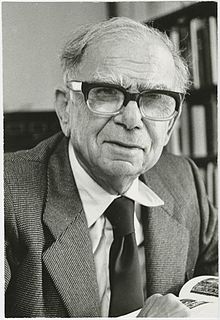

Anton Krautheimer (born 1879; died during the 20th century) was a German sculptor who lived in Munich.


Anton Krautheimer (born 1879; died during the 20th century) was a German sculptor who lived in Munich.
From 1900 on, Krautheimer studied in Munich at the Academy of Fine Arts. His teachers were Josef Eberle, Wilhelm von Rümann and Adolf von Hildebrand. During his studies, he worked for the jewelry manufacture Victor Mayer in Pforzheim/Germany as a jewelry designer and steel engraver. The archive there preserves photographs of jewelry after his designs, his drawing-book with designs of Art Nouveau jewelry and many copies of letters that Victor Mayer wrote to him.
In 1908, he won the prestigious Rome Prize and in 1909, he started to work as an independent sculptor in Munich. Henceforth, he exhibited statues in marble, bronze and wood, busts and small sculptures with the Munich Secession and the Exhibitions in the Munich Glaspalast. Many of his works are still to be found in Germany’s public space, for example, the Fountain of Heracles in the Dom-Pedro-Platz in Munich, the tomb of the Lotz-family in the cemetery in Berlin Zehlendorf and the statue of Siegfried on the Siegried-Fountain in Worms, Germany made by order of Adolf von Hildebrand.

Richard Krautheimer was a 20th-century art historian, architectural historian, Baroque scholar, and Byzantinist.

Adolf von Hildebrand was a German sculptor.

Professor Hugo Lederer was an Austro-Hungarian-born German sculptor.

Adolf von Donndorf was a German sculptor.

Konrad Knoll was a German sculptor.

Josef Bernhard Maria Bleeker was a German sculptor.

Ferdinand Miller, from 1875 von Miller and from 1912 Freiherr von Miller was an ore caster, sculptor and director of the Academy of Fine Arts, Munich. He also held a seat in the Royal Bavarian House of Lords, the Reichsrat.

Theodor Erdmann Kalide was a German sculptor.

Georg Wrba was a German sculptor and graphic artist. He created some 3,000–4,000 works, including as a collaborator of the Zwinger workshop.

The New Town Hall has stood on the Domshof in the centre of Bremen, Germany since 1913. Located behind the Unser-Lieben-Frauen-Kirchhof cemetery, it is adjacent to the older section of the Town Hall with which it forms a harmonious ensemble. Among its sumptuous rooms decorated with local artefacts, the New Town Hall houses the Senate Chamber used by the Senate for its regular meetings and the Great Hall, a venue for official receptions. In 2004, Bremen Town Hall was listed as a UNESCO World Heritage Site, together with the Roland of Bremen.

Adolf Brütt was a German sculptor. He was the founder of the Weimarer Bildhauerschule and its accompanying bronze foundry.

Franz Anton von Zauner was an Austrian sculptor who worked in the Neoclassical style.

Roman Anton Boos was a German sculptor.

Adolf Wamper was a German sculptor. Most of his works were figural, with some in an abstract realist style. During the 1930s he produced monumental sculptures for the Nazi régime; after World War II he taught at the Folkwang University of the Arts.

Ignatius Taschner, also known as Ignaz Taschner, was a German sculptor, medalist, graphic designer and illustrator.
Georg Schreyögg was a German sculptor. One of his better known surviving works is the 1907 St Barbara War Memorial in Koblenz, taken down to make way for a new road in 1956 but returned to a site in the city close to its original location in 2014.

Carl Sattler was a German architect and university lecturer.

Hubert Netzer was a German sculptor, medalist, and university professor.

Hans Dammann was a German sculptor; known primarily for his war memorials.